“The clearest way into the Universe is through a forest wilderness.”
—John Muir
||| LOYALTY TO THE EARTH by ELIZABETH ROBSON |||
The first thing to understand is that we are already connected. We breathe because trees exhale. Our blood is salted like the sea. The calcium in our bones was once part of mountains. The disconnection we feel is not natural—it has been imposed.
From birth, we are taught to look past the living world, to see it as scenery, as resource, as background noise. The birds are there, but we do not know their names. The wind moves through the trees, but we do not listen to what it says. The land and sea are there to be taken—for food, for energy, for materials, and a great big dump for our waste—for we do not see them as home. We are taught that nature is a place—somewhere separate, somewhere we visit, take pictures of, and then leave behind.
We’ve all experienced a lifetime of training to believe we are separate from nature, but we can unlearn this teaching. We can remember how to connect with the real world and learn how to recognize the connections that were always there.
To connect is to remember how to listen.
Begin with attention. Stop walking past the small things. The moss growing in your gutters or the crevices of an old log is as much the forest as the great old firs and cedars. The spider spinning a web in the corner of your window is no less a miracle than a migrating whale. The crows calling outside your door are speaking to each other, to you, to the shape of the day. Learn their language. Learn their names.
Slow down. The pace of the natural world is not the pace of machines, of profit, of human urgency. A river does not rush unless it is flooded. A tree does not force itself to grow faster. The clouds move only with the wind, and the rain water seeps through soil and rock over millennia. The Earth is patient, and if you want to hear what the Earth says, you must be patient, too.
Feel your own body as part of the Earth. Walk barefoot and laugh at the tickle of moss and duff between your toes. Plunge your hands into the cold sea, into the rough bark of an old tree. Let the Earth touch you back.
And most of all, love the Earth. Not in the way we are taught to love things—possessively, greedily—but in the way the Earth loves: generously, without expectation of return. Love the land enough to protect it. Love the water enough to feel the H2O molecules coursing through your body, flowing into the sea, evaporating up to the clouds, raining down on your face, and sinking back into your body. Love the wild ones enough to let them live. Know that the land, the water, and the wild ones are not separate from you; they are you, and you are them. Love the world enough to be loyal to it, to fight for it, to grieve for it, and to never, ever turn away.
Connection is not an idea. It is not a hobby or a weekend retreat. It is who you are, if you let yourself remember.
**If you are reading theOrcasonian for free, thank your fellow islanders. If you would like to support theOrcasonian CLICK HERE to set your modestly-priced, voluntary subscription. Otherwise, no worries; we’re happy to share with you.**
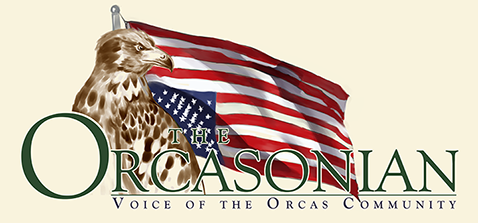
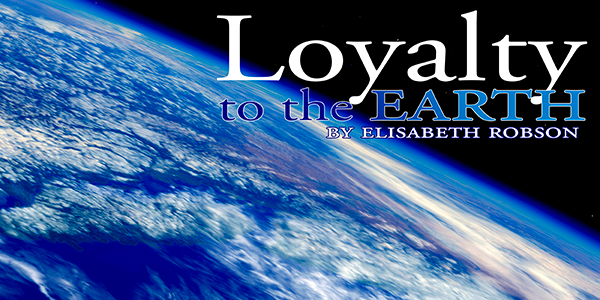

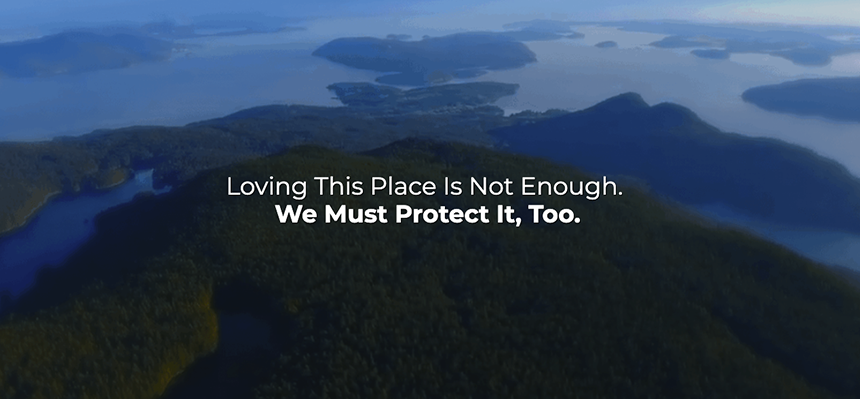
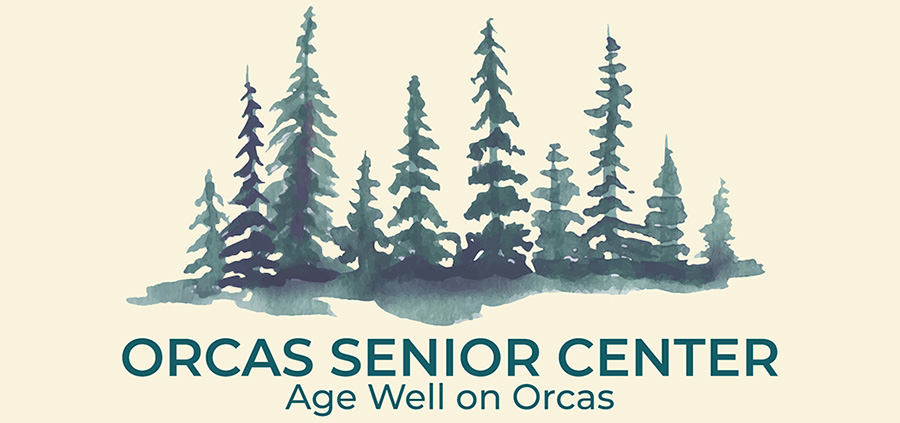


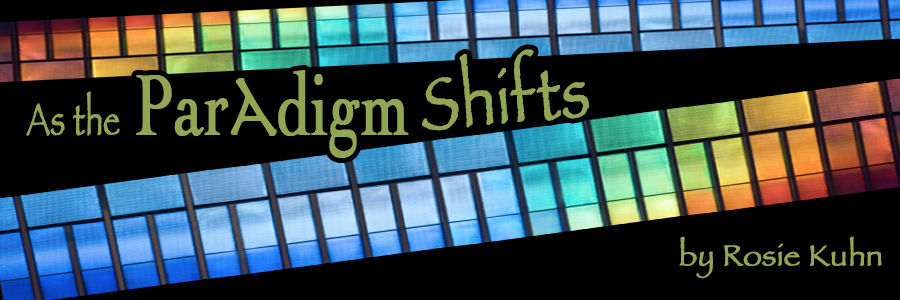
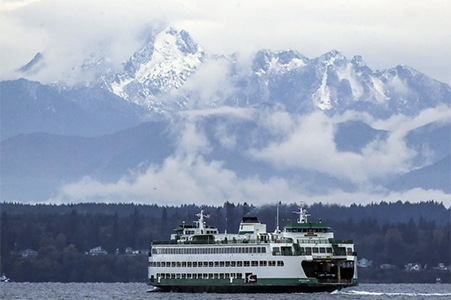
It’s a very lovely and moving essay, Elisabeth. My only comment is that the word “loyalty” in the title has a bit of an unfortunate tinge at present, and is frequently used to imply some kind of patriotic duty. I don’t know the right word, but I think the feelings you’re trying to evoke must represent the kind of “oneness” with the natural universe that our Native American antecedents must have known. Perhaps we don’t have a word in our language–our descriptors are mostly scientific, objective, and therefore inherently separate. But until we can find the words, and until we can experience that relationship, we don’t have a lot of hope of reconnecting and saving our natural world and our own place and future in it.
Thanks for your comment Brian. Loyalty is exactly the right word for me. Perhaps you might be interested in my previous piece where I define what loyalty means to me. https://theorcasonian.com/loyalty-to-earth-loyalty-to-the-natural-world/
I love seeing the word loyalty used in this way . I equate loyalty to loving and honoring what the earth needs – with love, appreciation, , appreciation. loyalty, and advocacy for protection. Reading this helps my soul made weary from watching, up close, what is happening to the beings all around me at the hands of humans thinking only of humans. I’ve written about this extensively, but not with the kind of grace of being that this editorial brings. Thank you for writing it, Elisabeth Robson.
@Brian Wiese; manipulators may try to coopt and corrupt the true meaning of words like loyalty, but they will fail. My only loyalty is to the earth and to the lovers of it, those who take time to be with it and witness and listen to what it is always telling us – and standing up for the rights of Nature and not looking away . I think the relationship comes first; and then you find the words. the If enough of us knew this, maybe wouldn’t be in the dire situation we are in today.
‘Nature does not hurry, yet everything is accomplished.’
– Lao Tzu
Unfortunately, the word loyalty has become larded with connotations of nationalism and worse yet, fealty to the fascist in the White House. I prefer the word “sympathy” in this context.
It is astonishing to see people cede the word loyalty to those who would use it in ways we disagree with. We cannot cede meaningful words, even if they are used by people we disagree with or don’t like. If we do that, eventually we will not be able to speak at all.
Disagreeing with people requires robust debate, and claiming the words we wish to use for purposes we believe in. Anything else is a slippery slope to the end of free speech.
I will never cede this word, when it means exactly what I want it to mean for the purpose of “loyalty to the Earth and the natural world.”
What’s astonishing and unfortunate is to see this entire debate over the word “loyalty,” which I meant as a minor side-comment that I now wish I hadn’t made. My real intent was to acknowledge the power of the original statement, which was about a connectedness and understanding beyond words. But words got in the way. Just proof of the original thesis: “To connect is to remember how to listen.”
I feel sorry for all of you. Not everything in life is driven by your political biases. Trump is a fascist! REEEEEE!
Brian, I wouldn’t have made a big deal of it except that the word is in the title of my series so it’s important to me that people understand it was not meant to be political in any way, but rather meaning devotion to and a willingness to defend the natural world. Maybe we can all move on now :-)
Speaking of pyrrhic victories, I would like to see an article or opinion piece on the incorp[oration of rights of nature in the San Juan County Charter and actual ecosystem benefits that have accrued. I consider such notions to be happy talk as Rome burns.
Words do matter, especially in legal matters, but are often only a tempest in a teapot in nature writing.
“The competition between Nature and the economy is deep and broad.
In the short term, the economy usually wins. In the long term …?”
BILL APPEL
Thank you Elizabeth… know that I proudly fly my Earth flag high, and that my loyalty is first to the Earth and all the people(s) and natural beings in the world. Know that I also miss your ecological overshoot “quote of the day,” and your (free) Substack RadFemBiophilia articles– https://radfembiophilia.substack.com/ . If you ever think that these aren’t a source of inspiration, and that they aren’t motivational… you are very wrong.
This posting, as well as Heather Nicholson’s recent, “Statement from Washington Wildlife First on Governor Ferguson’s appointments to Fish and Wildlife Commission,” and Joe Symon’s recent, “More lifeboats or less people?” are timely reminders, in spite of our community’s long-term common good, of what is going on around us and of what is happening right in front of our very eyes. “Righteous indignation” is the term that comes to mind.
The incorporation of “rights of nature” is an excellent idea Steve. As we continue in the race to the bottom I maintain that human rights and rights of nature are inseparable. This being an idea that has been put forth at various times and in various ways at national, state, and local levels before. Imagine, wouldn’t that be the day? To live in a community, (one that won’t even ban the use of *glyophosphates), that is emboldened to the point of guaranteeing rights “to that which allows us to live.” It’s also an idea, however, that is no different from that as you once so eloquently put before us, “In the last few years I have become more circumspect primarily because I realized that many good ideas swirl around to find a place to die on this island, in this town and in local govt.”
That being said, I know that there are already like-minded people working on this, and I believe that the basis for a database has been firmly established by the Salish Sea Inst.’s recent study (see below). I also feel that there are enough locally credentialed people, (noted academics) as well as local and regional non-profit entities, (Friends of the San Juans, SeaDoc Society, Island Stewards, Community Rights San Juan Islands, Protect The Coast PNW Campaign, Washington Wildlife First, Wa. St. Academy of Sciences, and the Salish Sea Inst.) to further such an endeavor. Can you not all find the common ground to work together?
SeaDoc Society– The State of the Salish Sea (Dr. Joe Gaydos)
“The Salish Sea Institute’s report features SeaDoc-led and funded science alongside contributions from other research organizations throughout the Salish Sea, and lays out the complexity of an ecosystem where decline has outpaced restoration and protection.”
https://www.seadocsociety.org/blog/the-state-of-the-salish-sea
Below also find a few references in regards to this–
The Myth of American Democracy: The Ruling Class Crusade Against Community & Nature–
https://celdf.org/2023/04/the-myth-of-american-democracy-the-ruling-class-crusade-against-community-nature/
and,
CELDF (Community Environmental Legal Defense Fund) Champions of Community Rights–
Advancing Community Rights in the Face of Threats around the World
CELDF works with communities facing fracking, pipelines, factory farms, and other threats are recognizing that these seemingly “single” issue threats share something in common – the community doesn’t have the legal authority to say “No” to them. The existing structure of law ensures that people are blocked from advancing their rights, governing their own communities and acting as stewards of the environment, while protecting corporate “rights” and interests over those of communities and nature. https://celdf.org/advancing-community-rights/
*Glyphosate is a broad-spectrum systemic herbicide and crop desiccant. It is an organophosphorus compound, specifically a phosphonate, which acts by inhibiting the plant enzyme 5-enolpyruvylshikimate-3-phosphate synthase. Glyphosate-based herbicides are used to kill weeds, especially annual broadleaf weeds and grasses that compete with crops. Monsanto brought it to market for agricultural use in 1974 under the trade name Roundup.
Steve, we didn’t actually get Rights of Nature into the charter as law; just some nice aspirational language. If it was law, then perhaps a few changes might have happened. But without the force of law, it is just happy talk as Rome burns as you say. Even in the places where RoN has been incorporated into the law, the impacts — in terms of actual protections –have been limited (although not nothing). For example, in 2021, Ecuador’s Constitutional Court issued a landmark ruling, halting mining in the Los Cedros Protected Forest, as the mining would have been a violation of their constitutional rights of nature. On the whole, however, I think that success has been the exception, unfortunately.
Essentially, almost the entire planet (with the exception of the few uncontacted, truly indigenous societies remaining) is playing in the mad “infinite growth on a finite planet” game of the global economy. That system will allow nothing to get in its way. And so yes, nature writing is largely a tempest in a teapot. However, with little else any of us can do to fight the machine, perhaps nature writing helps us to commiserate with one another as we mourn the loss of the natural world.
“Rights of Nature” are a construct that states backwards a restraint upon human hands. As rights, they cannot immediately be enforced by nature, so governments, special trustees, and nonprofits have to enforce those rights to … restrain human hands. This meets opposition from two quarters: (1) “Property Rights” (a concept in direct opposition to Rights of Nature) where legal ownership determines the right to use or misuse an area, a plant or animal, and (2) Use of the Commons (another concept in less direct but effective opposition to Rights of Nature) in the form of pollution of air or water or for instance over fishing such that one person gains at the expense of all others including other forms of life.
Because property laws and therefore the right to abuse and abuse what is legally owned by the actor are determined by state law, not county law beyond those areas allowed by the state to be county-controlled, Rights of Nature per se were not and are concepts that the Charter Review Commission could legally entertain. Only the County Council, in the backwards manner described above could, and then only to the extend the Legislature permits, can do so. The last Charter Review Commission spent a lot of time pursuing a this legally unattainable unattainable end.
Ultimately, it always comes down to human behavior. We are given life and a planet to care for. Not everyone sees that as a primary human mission.
Bill’s right: it is literally illegal in this country to protect the environment. Sure, we have a few nice laws that put a few barriers in the way–essentially hoops corporations must jump through, which they usually easily can–but extraction and destruction are the rule of law.
The whole point of Rights of Nature is to point our finger at that and say “this is wrong”. Why is it wrong? Because humans are part of nature, we cannot live on Earth without flourishing nature. Sometimes the law is wrong. The whole point of Rights of Nature is to do something illegal to prove a point and to begin to make change. Most communities are too afraid, as San Juan County proved to be, to take that step. It’s understandable given the power of the state and federal law to punish those who question the status quo.
I, personally, still believe in the Rights of Nature as a concept, but have given up on that as a strategy to protect the natural world. Changing the law is far too slow. Protecting the land by standing in the way of bulldozers just gets us sued or imprisoned. What does that leave us with? Well, pretty much nothing, which is why we are nearing the end of the sixth mass extinction, which will include us.
Of course, most people don’t see that. Most are so deeply indoctrinated in the “infinite growth on a finite planet” credo of human supremacy, business-as-usual seems fine.
“We are given life and a planet to care for” says “This planet was made for us.” No, it was not. If we cannot understand this basic fact, we are missing the entire point.
Despite our hortative tendencies, rightly earned over and over again in good lives eyes wide open watching ruthless economic growth and the associated destruction of the natural world, we are a small subset of modern Americans. Some of my blunt edge is the result of living and working for preservation in wild Alaska for over 3 decades. Those experiences in a much more primal world were thrilling and deeply satisfying but in the end serve as a clear reminder of just how badly “we” have hammered wonderfully rich and productive places like this. The life of a nature watcher is bitter-sweet. Thanks for the very thoughtful comments and ideas to think about in these rejuvenating spring weeks..
Well I guess we should all just roll over and play dead.
“Only the County Council, in the backwards manner described above could, and then only to the extend the Legislature permits, can do so.”
And that, the status quo, IS the problem, isn’t it? A County Council unwilling to buck the system, a state legislature guided by corporate lobbied preemptive legislation, a district attorney’s office that will avoid lawsuits even if it kills us, and lawyers who are quick to say “that’s the way it is.”
We get it counselor. It’s not the way we do things, it’s not the way things are done. Tell us something we don’t know. Meanwhile, our current corporate lobbied laws (under either administration) continue to stifle public dissent, to fuel genocide(s), wars for resources, refugees without end, and to escalate climate change and ecological overshoot.
To say, “We are given life and a planet to care for. Not everyone sees that as a primary human mission,” is a narrow construct of the problem at hand, it’s one that doesn’t begin to fully address the issue. It doesn’t, as it infers, mean that there’s nothing we can do about it, or that we shouldn’t do anything in regards to the moment. It’s a bit like saying, “Well, you made your bed now you’re gonna have to lay in it.”
Instead of defending the system as is while telling us what we can’t do, in an effort to pursue that which needs to be done is it possible that you offer some suggestions of what might be doable (at out local government level), in an effort to enact change for the better? For someday, your grandchildren are gonna ask what you did… and my guess is that saying you defended the law isn’t going to impress them.
The Myth of American Democracy: The Ruling Class Crusade Against Community & Nature–
https://celdf.org/2023/04/the-myth-of-american-democracy-the-ruling-class-crusade-against-community-nature/
Describing the system isn’t defending it. That attribution is untrue and unfair.
I have repeatedly asked one or more in this column, exactly how do you propose to go about throttling back those elements of the human imagination that propels our economy forward and at the same time, grants us the benefits of environmentally expensive medical and scientific advances, keeping in mind that doing so does absolutely nothing to advance communities and societies desperately in need of those same benefits? The unhelpful response starts with, “You just don’t get it.”
Honest debate requires all (there are more than two) sides to have the same and complete facts in hand, understand and be competent in dealing with those facts, and be willing to cooperate toward a mutually desired end. I look forward to that day.
Gee, Mr Johnson Johnson, instead of attacking Mr. Appel for stating the truth about the lack of legal or constitutional foundation for so-called “Rights of Nature”, why don’t you “offer some suggestions of what might be doable (at out local government level), in an effort to enact change for the better.” (your words).
The whole “Rights of Nature” schtick is a fantasy, an ethereal fever-dream of frustrated, self-annointed saviors of the world from the undeniable impacts of its dominant species. In other words, another example of performative activist jackassery.
Don’t be a bully.
This:
This:
“I feel sorry for all of you. Not everything in life is driven by your political biases. Trump is a fascist! REEEEEE!”
and This:
“The whole “Rights of Nature” schtick is a fantasy, an ethereal fever-dream of frustrated, self-annointed saviors of the world from the undeniable impacts of its dominant species. In other words, another example of performative activist jackassery.” – Harry Balzac
You make a lot of assumptions here about people you ‘claim’ to feel sorry for and don’t even know. If your aim is to effectively silence people by being a bully yourself…nice try.
But.. since you asked…even though I think we are unable to stop the juggernaut of greed and self-centeredness that will be our undoing in this 6th mass extinction:
At a local level, we can appeal en masse to the Growth Management Hearings Examiner, with proof that what is being pushed (unlimited, uncontrolled growth in a finite archipelago) is unsustainable and hurting us and the rest of biology. We could insist that we want to dial back the land use densities and disallow things like 30,000 gallon above-ground propane tanks right next to the highest density clustered housing – for starters.
We could push harder for that tree ordinance that has been promised by the county, and come up with a tree planting plan and plant seedling or young trees NOW (with deer and rabbit protection) while all the dithering continues ad infinitum, so something’s already growing when they do the next mass tree cutting to widen roads because we took state monies and now have to.
We could incentivize energy conservation. (OPALCO)
We could buy local and support our mom and pop businesses
We could keep pushing for other economic options besides sole tourism/real estate industries.
We could pursue a viable public transit schedule here for at least the morning commute to the ferry and the afternoon return from the ferry, for those who work on other islands or the mainland, or are car-less. We could enccourage carpooling and make places to stand to catch a ride, like they have on San Juan Island.
We could appeal to the commissioners and tell them we aren’t buying the ‘nothing we can do’ bit, and bring all our suggestions to meetings again and again.
We COULD stop bringing up politics and approach this as an issue that affects and impacts everyone, and try to initiate respectful dialogue between differing factions. We COULD ask someone what a word means or how they are using a word, to better understand them.
We COULD stop fighting, finger pointing, and decide to work together as a community to, as you point out above, at least admit and face the undeniable impacts of the dominant species on the rest of the natural world. We could try to self educate and educate others as to the biological life enhancing value of places like wetlands and nearshore environments, forests, ETC so that people would WANT to do the right thing for the lands that support us all.
We could encourage formation of a youth coalition or task force, and some scientific studies on the biological impacts from things like seasonal or monthly water testing, and really listen to what they have to say and discuss the results they find.
What’ve you got?